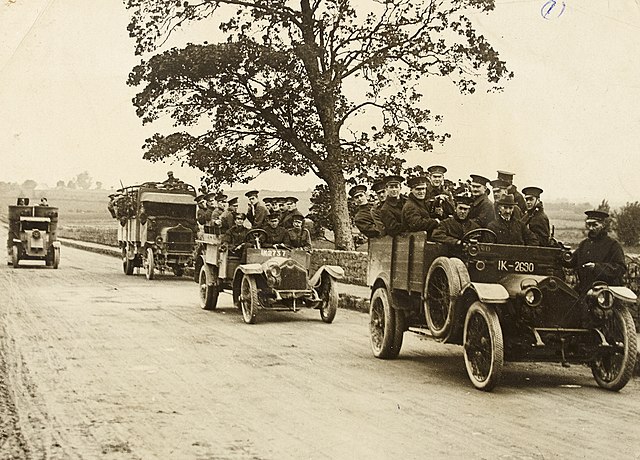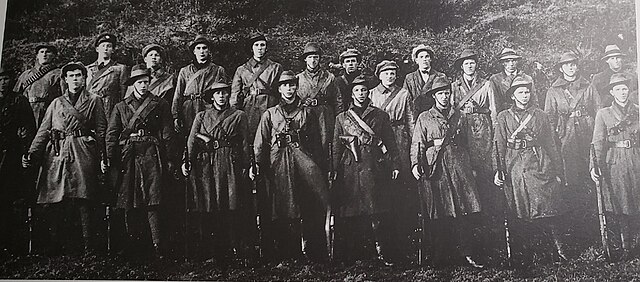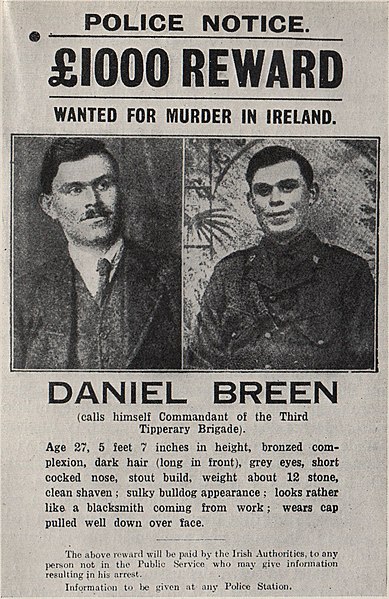The 1921 Anglo-Irish Treaty, commonly known in Ireland as The Treaty and officially the Articles of Agreement for a Treaty Between Great Britain and Ireland, was an agreement between the government of the United Kingdom of Great Britain and Ireland and representatives of the Irish Republic that concluded the Irish War of Independence. It provided for the establishment of the Irish Free State within a year as a self-governing dominion within the "community of nations known as the British Empire", a status "the same as that of the Dominion of Canada". It also provided Northern Ireland, which had been created by the Government of Ireland Act 1920, an option to opt out of the Irish Free State, which the Parliament of Northern Ireland exercised.
Éamon de Valera, who, as President of the Irish Republic, opposed the Treaty
Crowds holding a prayer vigil outside Whitehall, while negotiations are underway inside
Members of the Irish negotiation committee returning to Ireland in December 1921
British cavalry soldiers leaving Ireland, 1922
Irish War of Independence
The Irish War of Independence or Anglo-Irish War was a guerrilla war fought in Ireland from 1919 to 1921 between the Irish Republican Army and British forces: the British Army, along with the quasi-military Royal Irish Constabulary (RIC) and its paramilitary forces the Auxiliaries and Ulster Special Constabulary (USC). It was part of the Irish revolutionary period.
RIC and British Army personnel near Limerick, c.1920
West Connemara IRA flying column
Police wanted poster for Dan Breen, one of those involved in the Soloheadbeg Ambush in 1919.
Wall plaque in Great Denmark Street, Dublin where the Dublin IRA Active Service Unit was founded.








